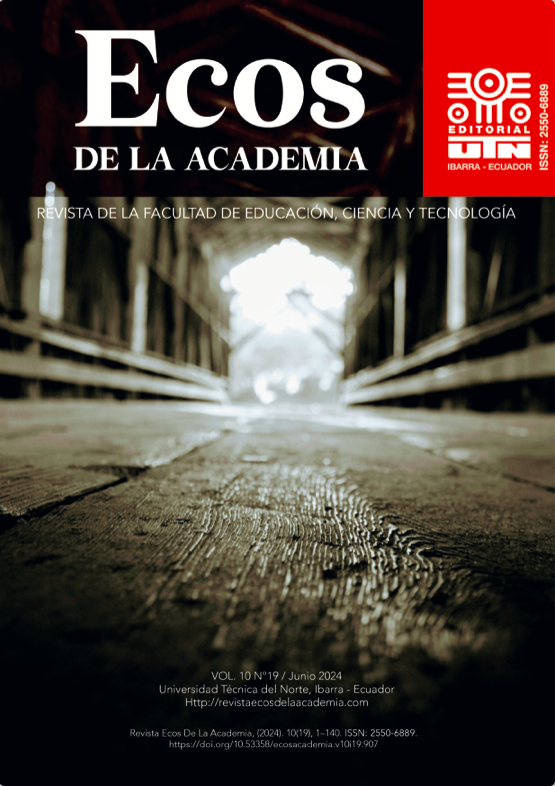Technology-Enhanced Grammar Activities in English as a Foreign Language Writing Accuracy
Main Article Content
Abstract
The objective of the study was to determine the effects of technology-enhanced grammatical activities on writing accuracy in English as a foreign language at a Higher Technological Institute. It involved participants aged 18 to 30 from an A1 level English course according to the CEFR in the institution's foreign language program. The teacher-researcher designed a mixed-method study in which homogeneous and intact control and experimental groups were established to implement an intervention plan based on technology-enhanced activities. Data were collected through a pre-test and post-test, questionnaire, and survey. The results indicated that the experimental group students outperformed the control group and also expressed positive attitudes towards the technology-enhanced activities. These findings suggest that technology-enhanced grammatical activities improved students' writing accuracy in English as a foreign language and positively affected their perception of technology application in the classroom. The outcomes of this study have significant implications for the design of technology-use activities, as well as for teachers of English as a foreign language.
Downloads
Article Details

This work is licensed under a Creative Commons Attribution-NonCommercial-ShareAlike 4.0 International License.
The authors transfer the publication rights to the journal in all its formats and digital media.
Regarding Copyright CC BY-NC-SA 4.0, this journal is under a license of https://creativecommons.org/licenses/by-nc-sa/4.0/.
You are free to:
Share: copy and redistribute the material in any medium or format
Adapt: remix, transform, and build upon the material
The licensor cannot revoke these freedoms as long as you follow the license terms.
Under the following terms:
1. Attribution: You must give appropriate credit, provide a link to the license, and indicate if changes were made. You may do so in any reasonable manner, but not in any way that suggests the licensor endorses you or your use.
2.Non-Commercial:You may not use the material for commercial purposes.
3. ShareAlike: If you remix, transform, or build upon the material, you must distribute your contributions under the same license as the original.
4.No additional restrictions: You may not apply legal terms or technological measures that legally restrict others from doing anything the license permits.
Notices:
You do not have to comply with the license for elements of the material in the public domain or when your use is permitted by an applicable exception or limitation.
No warranties are given. The license may not grant you all the permissions necessary for your intended use. For example, other rights such as publicity, privacy, or moral rights may limit how you use the material.
LEGAL CODE CC BY-NC-SA 4.0
References
Beglar, D., & Nemoto, T. (2014). Developing Likert-scale questionnaires. JALT2013 Conference Proceedings, 1–8.
Bryman, A. (2012). Social Research Methods (Fourth edi).
CES, C. de E. S. (2019). Reglamento de Régimen Académico. In Angewandte Chemie International Edition, 6(11), 951–952.
Creswell, J. (2012). Educational Research. In Pearson Education (Fourth edi).
Doyle, L., Brady, A. M., & Byrne, G. (2009). An overview of mixed methods research. Journal of Research in Nursing, 14(2), 175–185. https://doi.org/10.1177/1744987108093962 DOI: https://doi.org/10.1177/1744987108093962
Dulay, H., Burt, M., & Stephen, K. (1982). Language Two (p. 313). Oxford University Press.
Golonka, E. M., Bowles, A. R., Frank, V. M., Richardson, D. L., & Freynik, S. (2014). Technologies for foreign language learning: A review of technology types and their effectiveness. Computer Assisted Language Learning, 27(1), 70–105. https://doi.org/10.1080/09588221.2012.700315 DOI: https://doi.org/10.1080/09588221.2012.700315
Gopalan, M., Rosinger, J., & Ahn, J. Bin. (2020). Use of Quasi-Experimental Research Designs in Education Research: Growth, Promise, and Challenges. In Review of Research in Education (pp. 218–243). AERA. DOI: https://doi.org/10.3102/0091732X20903302
Kopp, K. (2015). Moving Beyond Computers. In Integrating Technology into the Curriculum (Issue 2015, pp. 111–128).
Kuru, S. (2019). A qualitative study on a situated experience of technology integration: reflections from pre-service teachers and students. Computer Assisted Language Learning, 32(3), 163–189. https://doi.org/10.1080/09588221.2018.1552974 DOI: https://doi.org/10.1080/09588221.2018.1552974
Mahmoudi, E., Samad, A. bt A., & Razak, N. Z. B. A. (2012). Attitude and Students’ Performance in Computer Assisted English Language Learning (CAELL) for Learning Vocabulary. Procedia - Social and Behavioral Sciences, 66, 489–498. https://doi.org/10.1016/j.sbspro.2012.11.293 DOI: https://doi.org/10.1016/j.sbspro.2012.11.293
Munn, P., & Drever, E. (1990). Using Questionnaires in Small-Scale Research. A Teachers’ Guide. (Issue 4). http://eric.ed.gov/?id=ED326488
Polio, C., & Shea, M. C. (2014). An investigation into current measures of linguistic accuracy in second language writing research. Journal of Second Language Writing, 26, 10–27. https://doi.org/10.1016/j.jslw.2014.09.003 DOI: https://doi.org/10.1016/j.jslw.2014.09.003
Roberts, L. D., & Allen, P. J. (2015). Exploring ethical issues associated with using online surveys in educational research. Educational Research and Evaluation, 21(2), 95–108. https://doi.org/10.1080/13803611.2015.1024421 DOI: https://doi.org/10.1080/13803611.2015.1024421
Romano, F. (2019). Grammatical accuracy in EAP writing. In Journal of English for Academic Purposes (Vol. 41). https://doi.org/10.1016/j.jeap.2019.100773 DOI: https://doi.org/10.1016/j.jeap.2019.100773





